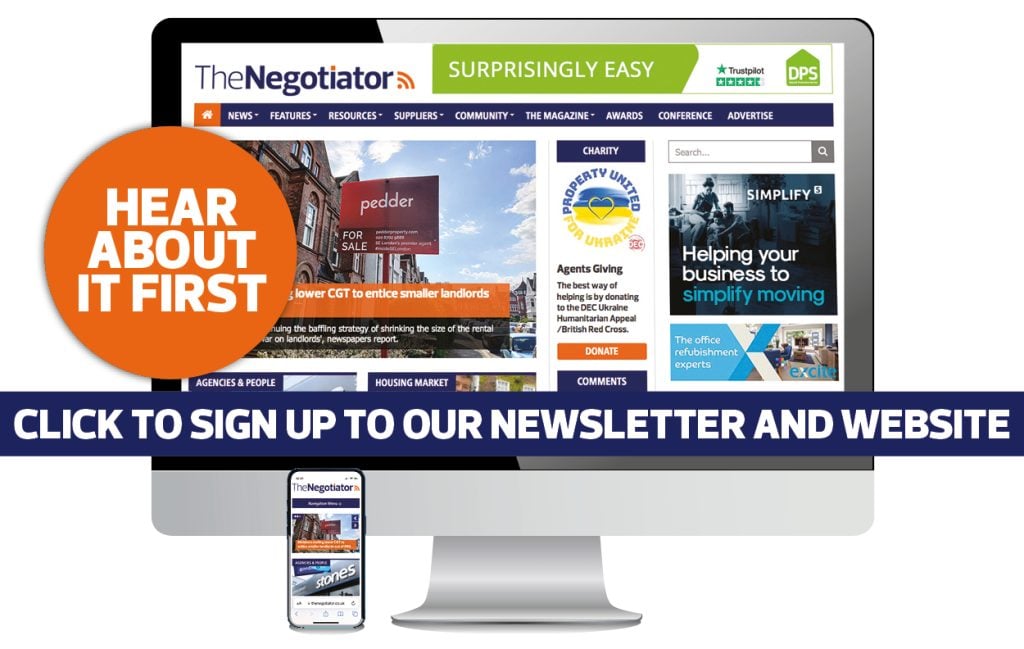7 types of estate agency marketing content that really work
Varying your agency marketing content helps you reach niche audiences, match form to channel and reinforce your message, says Nelly Berova.
 Whenever we talk about estate agency content marketing, the format that probably springs to mind is the blog. Blogs or written articles are great for creating search-optimised content that really solves the problems of your target audience, raising awareness and boosting engagement with your brand.
Whenever we talk about estate agency content marketing, the format that probably springs to mind is the blog. Blogs or written articles are great for creating search-optimised content that really solves the problems of your target audience, raising awareness and boosting engagement with your brand.
But there are plenty of other tools that you shouldn’t ignore.
Varying your repertoire has lots of advantages – you can reach people you might have missed otherwise, create content that works best for different channels and reinforce your message by presenting it in different ways.
If you’re thinking of branching out into different types of content, first consider your audience and which will reach them best. It’s also worth playing to your strengths – if you have great writers or video makers on your team, make the most of their skills.
We look at the key content types we think estate agents should be using now.
Blogging
Written blog content on your site will always be a great way to engage with audiences. While the popularity of video has grown exponentially over the past few years, people are still happy to read well-crafted written pieces that explain an issue and answer their search queries.
Make sure that your blogs are written with your audience in mind, have useful and original content that responds to the things that keep them awake at night and are optimised to rank for Google.
Video
Engaging, immediate and requiring little effort by the viewer, video is the content form of choice for millions of people, worldwide. Video is particularly good if you’re sharing your content on social media where it is pretty much expected. But having a video in your email newsletters can boost open rates significantly too.
Video works better for some situations – you can’t really show a buyer around a property using a blog – but don’t be afraid to get creative. Take your camera outside and show potential home movers the best bits of the local area or use video to explain something complex – changes to landlord legislation, for example.
Email may be a less than fashionable method of communication these days, but content that goes direct to your customer’s inbox remains one of the most effective ways of building relationships, increasing engagement and achieving conversion.
Unlike blogs or social media posts, email marketing is about nurturing customers once they have taken the step of registering with you.
This is the start of a deeper relationship. So, while there are plenty of software options to help you craft and automate email newsletters, don’t think of this as a one-size-fits-all option. Use email to target precise audiences with valuable content that is relevant to them – advice about all the stages of selling for potential vendors, for example.
You are looking to build trust and loyalty with useful content that brings your brand to mind when they make that essential listing decision.”
Visual content
Visual content refers to the infographics, charts, illustrations and diagrams that tell a story in visual form. This type of content is great for grabbing attention and explaining complex information. For this reason, it is especially effective for getting social shares and driving traffic to your site.
Lead magnets
Lead magnets or baits are a crucial part of the customer journey as you move people from being mildly interested in your blog or videos to a deeper engagement with your brand. They are useful resources that you give away in return for the customer’s email address to target them with content that leads to conversion.
Examples include ebooks, guides or white papers, which can be downloaded to explain a subject – how to sell an inherited property, for example.
They don’t need to be a physical item – you could offer spaces on a webinar on a complex area such as landlord tax, access to a podcast or a time-limited free offer. The lead magnate needs to be enticing and of real value to your customer to make it credible.
Checklists
Checklists are a type of lead magnet that are hugely popular because they help people manage a difficult process. You might create a checklist aimed at new landlords or at people embarking on the selling process. They are great for customers because they break down the process into easy steps.
By creating branded checklists that customers can download and keep, you are also giving them a reminder that you are there to help them take the next step.
Social media posts
Both paid and organic social media posts are important for raising awareness of your brand, boosting engagement and driving traffic to your website.
You don’t have to go back to square one – think about how you can repurpose content to work in different ways.”
Finally, it’s worth noting that you don’t need to go back to square one for each piece of content. Think about how you can repurpose great blogs or videos to work in different ways – a concise version of an existing blog reworked for Facebook or a written Q&A based on a video interview, for example. Just tailor each to the right audience and channel to maximise the impact of your project.
Got a question? Need help with your marketing? Visit: www.artdivision.co.uk










